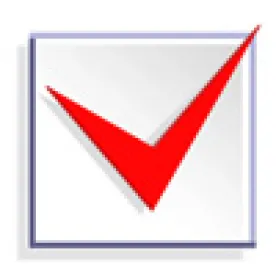Under West Virginia law, the state legislature must approve all rules drafted by state agencies, including the West Virginia Department of Environmental Protection (WVDEP). Just as importantly, the West Virginia legislature only meets for 60 days during the first quarter of each year.
Occasionally, this creates timing problems related to EPA-imposed deadlines. An example of this is currently occurring with the November 22, 2016 deadline for submittal of a revised state implementation plan (SIP) for addressing excess emissions during periods of startup, shutdown and malfunction (SSM). Essentially, EPA is requiring states to modify their SIPs by removing previously approved language that exempts industrial facilities from compliance with emissions standards related to those periods where certain demonstrations are made that the excess emissions were unavoidable. In West Virginia, the WVDEP can draft and recommend changes to the SIP, but they only become binding if the legislature approves the changes while it is in session. Thus, West Virginia’s legal requirement means that the state missed the EPA’s response deadline. If EPA declines to take West Virginia’s unique situation into account, EPA could impose a Federal Implementation Plan (FIP) within 24 months.
That reality does not mean that West Virginia has been doing nothing. As part of its annual rules package, WVDEP adopted a rule on August 26, 2016, establishing criteria to allow companies subject to 45CSR2, 45CSR3, 45CSR5, 45CSR6, 45CSR7, 45CSR10, 45CSR21 or 45CSR40 that have excess SSM emissions that cannot meet an allowable emission limit indicative of normal operations to request an alternative emission limitation. This limitation will be a component of a continuous allowable emission limitation and may take the form of a control measure such as (1) a numerical limitation, (2) a technological control requirement, or (3) a work practice requirement. It is now up to the legislature to approve this rule and the governor’s signature to make it final.
As part of its annual rules package, WVDEP is also proposing additional rules affecting state air quality. Specifically, WVDEP is currently proposing the following rules for legislature approval:
45CSR8 -- Ambient Air Quality Standards: This proposed rule establishes and adopts ambient air quality standards for sulfur oxides, particulate matter, carbon monoxide, ozone, nitrogen dioxide and lead, equivalent to the national primary and secondary ambient air quality standards established under Section 109 of the Clean Air Act (CAA) and promulgated by the United States Environmental Protection Agency under 40 CFR Part 50, and 40 CFR Part 53.
45CSR13 -- Permits for Construction, Modification, Relocation, and Operation of Stationary Sources of Air Pollutants, Notification Requirements, Administrative Updates, Temporary Permits, Permission to Commence Construction, and Procedures for Evaluation: This proposed rule sets forth (1) the procedures for stationary source reporting; (2) the criteria (a) for obtaining a permit to construct and operate a new stationary source which is not a major stationary source, (b) to modify a non-major stationary source, to make modifications which are not major modifications to an existing major stationary source, and (c) to relocate non-major stationary sources within the state of West Virginia; and (3) to set forth procedures to allow facilities to commence construction in advance of permit issuance.
45CSR14 -- Permits for Construction of and Major Modifications of Major Stationary Sources for the Prevention of Significant Deterioration of Air Quality: This proposed rule establishes pre-construction permit emission limitations and other measures as may be necessary for the Prevention of Significant Deterioration of air quality and adopts a preconstruction permit program in accordance with the policy of Section 101(b)(1) of the CAA, the purposes of Section 160 of the CAA, and the Prevention of Significant Deterioration of air quality requirements of 40 CFR Section 51.166.
45CSR16 -- Standards of Performance for New Stationary Sources: This proposed rule establishes and adopts standards of performance for new stationary sources promulgated by the EPA pursuant to Section 111(b) of the CAA. It codifies general procedures and criteria to implement the standards of performance for new stationary sources set forth in 40 CFR Part 60 except for Subparts B, C, Ca, Cb, Cc, Cd, Ce, Ea, Eb, Ec, WWW, AAAA, BBBB, CCCC, DDDD, EEEE, FFFF, LLLL and MMMM. It also specifically excludes the 2015 amendments to subpart AAA and Subpart QQQQ relating to wood-burning heaters and appliances.
45CSR25 -- Control of Air Pollution from Hazardous Waste Treatment, Storage, and Disposal Facilities: This proposed rule establishes and adopts a program of regulation over air emissions and emission standards for the treatment, storage and disposal of hazardous waste promulgated by EPA pursuant to the Resource Conservation and Recovery Act (RCRA), as amended by codifying general procedures and criteria to implement emission standards set forth in the 40 CFR Parts 260, 261, 262, 264, 265, 266, 270 and 279 as listed in Table 25-A.
45CSR34 -- Emission Standards for Hazardous Air Pollutants (HAP): This proposed rule establishes and adopts a program of national emission standards for HAPs and other regulatory requirements promulgated by EPA pursuant to 40 CFR Parts 61, 63 and Section 112 of the CAA, as amended. It codifies general procedures and criteria to implement emission standards for stationary sources that emit (or have the potential to emit) one or more of the eight substances listed as HAPs in 40 CFR Section 61.01(a), or Section 112(b) of the CAA with the exception of the following Subparts: (1) E of 40 CFR Part 63 and any provision related to Section 112(r) of the CAA; (2) DDDDDD, LLLLLL, OOOOOO, PPPPPP, QQQQQQ, TTTTTT, WWWWW, ZZZZZ, HHHHHH, BBBBBB, CCCCCC, WWWWWW, XXXXXX, YYYYYY, ZZZZZZ, AAAAAAA, BBBBBBB, CCCCCCC, and DDDDDDD of 40 CFR Part 63; and (3) B, H, I, K, Q, R, T, and W; Methods 111, 114, 115 and Appendix D and E of 40 CFR Part 61.


 />i
/>i

